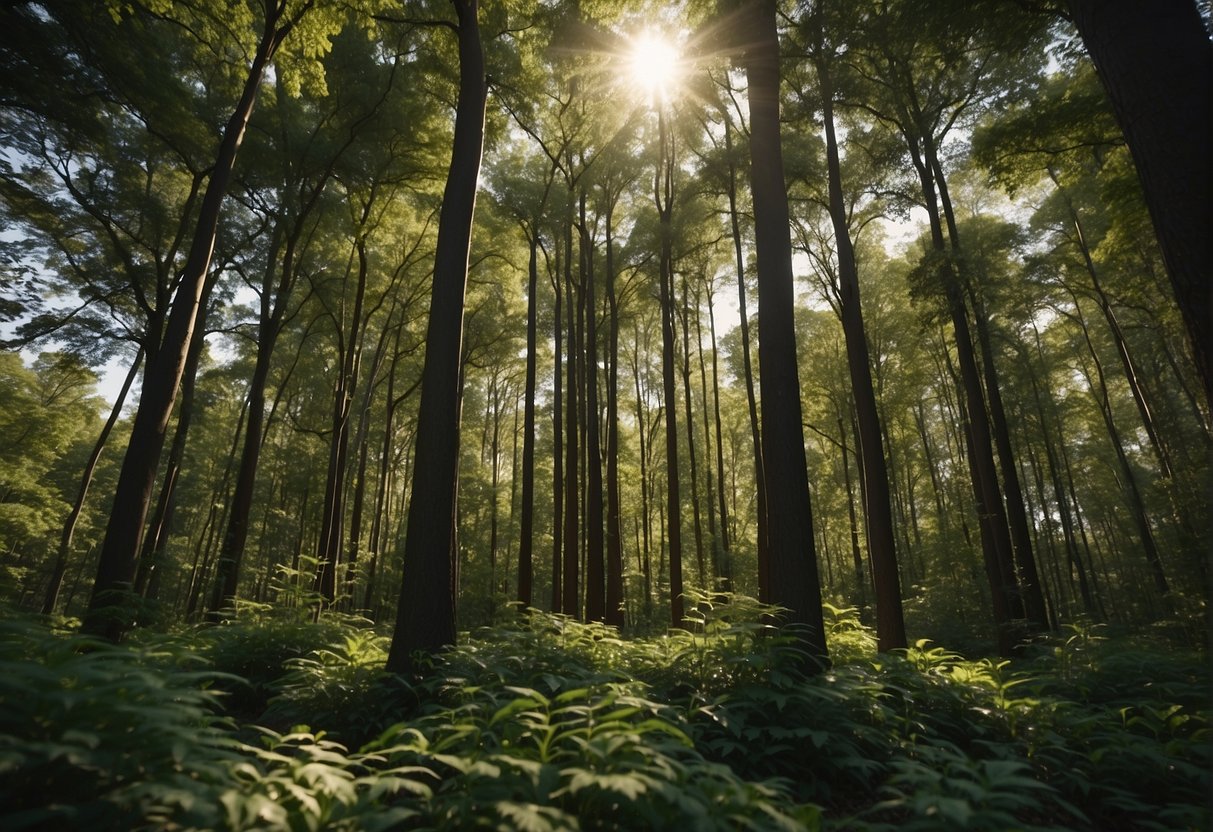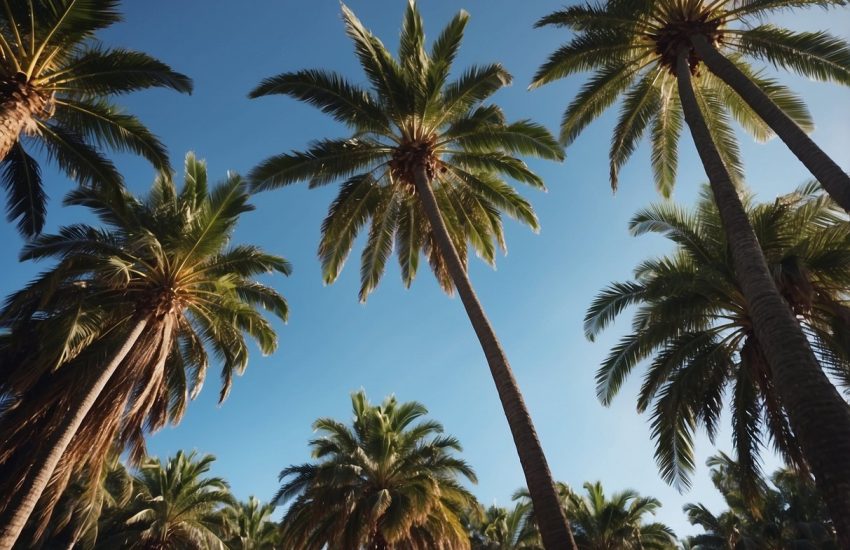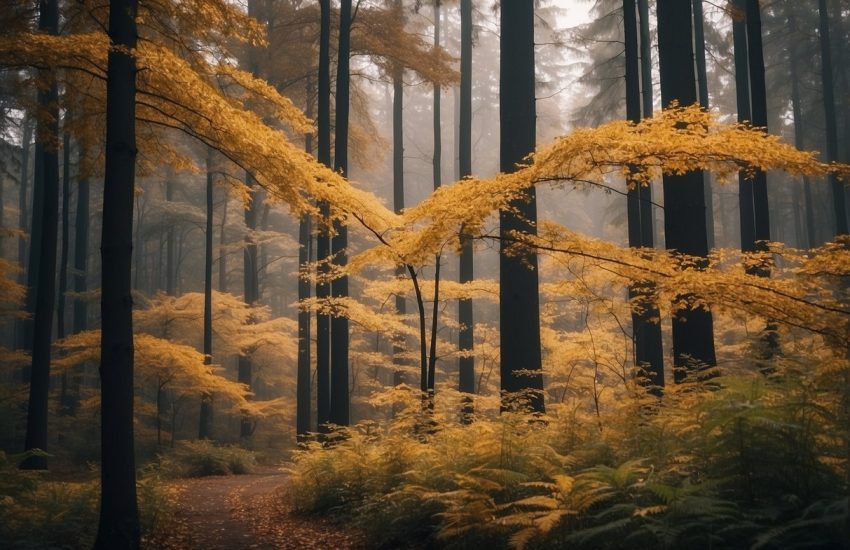Fastest Growing Trees in Georgia: Top Varieties for Quick Growth
Georgia is known for its lush greenery and diverse wildlife. With its warm and humid climate, the state is home to a variety of tree species that thrive in its soil. Among these trees are some of the fastest-growing species in the world. For those looking to add some greenery to their property or simply interested in learning more about the local flora, exploring the fastest-growing trees in Georgia is a great place to start.

One of the most popular fast-growing trees in Georgia is the Leyland Cypress. This tree is a hybrid of the Monterey Cypress and the Alaskan Cedar and is known for its rapid growth rate. The Leyland Cypress can grow up to three feet per year and can reach a height of up to 50 feet. It is commonly used as a privacy screen or windbreak due to its dense foliage and tall stature.
Another fast-growing tree species in Georgia is the River Birch. This tree is native to the southeastern United States and is known for its unique peeling bark and fast growth rate. The River Birch can grow up to two feet per year and can reach a height of up to 70 feet. It is commonly used for erosion control, as well as for its aesthetic appeal in landscaping.
Characteristics of Fast-Growing Trees in Georgia

Georgia’s warm and humid climate makes it an ideal place for fast-growing trees to thrive. These trees are known for their ability to quickly establish themselves, adapt to different soil types and climates, and provide a range of benefits to the environment and ecosystems. Here are some of the key characteristics of fast-growing trees in Georgia.
Adaptability to Soil Types and Climate
Fast-growing trees in Georgia are well-suited to a variety of soil types and climates. They can tolerate both wet and dry conditions, making them ideal for areas that experience both heavy rainfall and drought. Some species, such as the red maple and the sweetgum, are particularly adaptable and can grow in a wide range of soils, from sandy to clay.
Growth Rate and Mature Size
Fast-growing trees in Georgia can grow several feet per year, making them ideal for quickly establishing shade and privacy. However, it is important to note that fast growth does not always mean a large mature size. Some species, such as the river birch and the black willow, may grow quickly but remain relatively small, while others, such as the tulip poplar and the sycamore, can grow to be quite large.
Environmental Benefits and Ecosystem Support
Fast-growing trees in Georgia provide a range of environmental benefits and support local ecosystems. They can help to reduce erosion, improve air and water quality, and provide habitat for wildlife. Some species, such as the black cherry and the white oak, produce fruit and nuts that are an important food source for birds and other animals.
Overall, fast-growing trees in Georgia are a great choice for those looking to quickly establish shade and privacy in urban or suburban landscapes, while also providing a range of benefits to the environment and local ecosystems. By choosing the right species for their specific soil and climate conditions, homeowners and landscapers can enjoy the many benefits of fast-growing trees in Georgia.
Top Fast-Growing Trees for Georgian Landscapes
Georgia’s climate and soil conditions are ideal for growing a variety of fast-growing trees that can add beauty, shade, and privacy to any landscape. Here are some of the top fast-growing trees that are perfect for Georgian gardens.
Shade and Ornamental Trees
Red Maple
Red Maple is a fast-growing deciduous tree that can grow up to 3 feet per year. It is a great shade tree that provides beautiful red foliage in the fall. It is also a popular ornamental tree that can add beauty to any landscape.
River Birch
River Birch is a fast-growing deciduous tree that can grow up to 3 feet per year. It is a great shade tree that provides beautiful peeling bark and yellow fall foliage. It is also a popular ornamental tree that can add beauty to any landscape.
Green Ash
Green Ash is a fast-growing deciduous tree that can grow up to 3 feet per year. It is a great shade tree that provides beautiful green foliage in the summer and yellow fall foliage. It is also a popular ornamental tree that can add beauty to any landscape.
Lacebark Elm
Lacebark Elm is a fast-growing deciduous tree that can grow up to 3 feet per year. It is a great shade tree that provides beautiful peeling bark and yellow fall foliage. It is also a popular ornamental tree that can add beauty to any landscape.
Trees for Wildlife and Privacy
Willow Oak
Willow Oak is a fast-growing deciduous tree that can grow up to 2 feet per year. It is a great tree for wildlife habitat and can provide shade and privacy to any landscape. It is also a popular ornamental tree that can add beauty to any landscape.
Southern Magnolia
Southern Magnolia is a fast-growing evergreen tree that can grow up to 2 feet per year. It is a great tree for wildlife habitat and can provide shade and privacy to any landscape. It is also a popular ornamental tree that can add beauty to any landscape.
Chinese Elm
Chinese Elm is a fast-growing deciduous tree that can grow up to 3 feet per year. It is a great tree for wildlife habitat and can provide shade and privacy to any landscape. It is also a popular ornamental tree that can add beauty to any landscape.
Japanese Zelkova
Japanese Zelkova is a fast-growing deciduous tree that can grow up to 2 feet per year. It is a great tree for wildlife habitat and can provide shade and privacy to any landscape. It is also a popular ornamental tree that can add beauty to any landscape.
In conclusion, these fast-growing trees can add beauty, shade, and privacy to any Georgian landscape. Whether you are looking for shade trees, ornamental trees, or trees for wildlife habitat, there is a tree on this list that will suit your needs.
Caring for Your Fast-Growing Trees

Fast-growing trees are a great addition to any landscape. They provide shade, beauty, and can increase your property value. However, they require proper care and maintenance to reach their full potential. Here are some tips for caring for your fast-growing trees.
Watering and Nutrient Requirements
Water is essential for the growth and health of your trees. Newly planted trees need to be watered deeply and regularly to establish a strong root system. After the first year, trees can be watered less frequently, but still need a deep watering every 7-10 days during dry periods.
Nutrients are also important for the growth of your trees. A balanced fertilizer can help your trees grow faster and healthier. It is recommended to fertilize your trees in the spring and fall, but be careful not to over-fertilize as this can damage your trees.
Pruning and Maintenance Tips
Pruning is an important part of tree maintenance. It helps shape your tree, removes dead or damaged branches, and promotes healthy growth. It is recommended to prune your trees in the late winter or early spring before new growth begins.
When pruning, make sure to use sharp, clean tools and make clean cuts. Avoid leaving stubs or cutting too close to the trunk. It is also important to remove any crossing or rubbing branches to prevent damage.
In addition to pruning, regular maintenance is important for the health of your trees. This includes removing any dead or diseased branches, mulching around the base of your trees, and keeping an eye out for any signs of pests or diseases.
By following these tips, you can ensure that your fast-growing trees thrive and provide beauty and shade for years to come.
Selecting the Right Tree for Your Property

When it comes to selecting the right tree for your property, there are several factors to consider. Not all trees are created equal, and different species have different growth rates, sizes, and requirements. Here are some important things to keep in mind when choosing a tree for your landscape.
Considerations for Tree Selection
Before making a decision, it’s important to consider the size of your property and the purpose of the tree. If you have a small landscape, you may want to choose a fast-growing shade tree that won’t take up too much space. On the other hand, if you have a large property, you may want to consider a larger tree that can provide shade and enhance the aesthetic appeal of your landscape.
Another important factor to consider is the climate and soil conditions in your area. Some trees may not thrive in certain environments, so it’s important to choose a species that is well-suited to your location. Additionally, it’s important to choose a tree that is appropriate for your gardening and landscaping abilities. Some species require more maintenance than others, so it’s important to make an informed decision.
Avoiding Invasive Species and Improving Sustainability
When selecting a tree, it’s important to avoid invasive species that can harm the environment and reduce the sustainability of your landscape. Invasive species can outcompete native plants, reduce biodiversity, and even cause damage to buildings and infrastructure. To avoid these issues, it’s important to choose a species that is native to your area and has a proven track record of sustainability.
One way to improve the sustainability of your landscape is to choose a tree that provides additional benefits beyond shade and aesthetics. For example, some species can help reduce soil erosion, provide habitat for wildlife, and even improve air and water quality. By making an informed decision and choosing a tree that is well-suited to your property, you can create a beautiful and sustainable landscape that will thrive for years to come.


